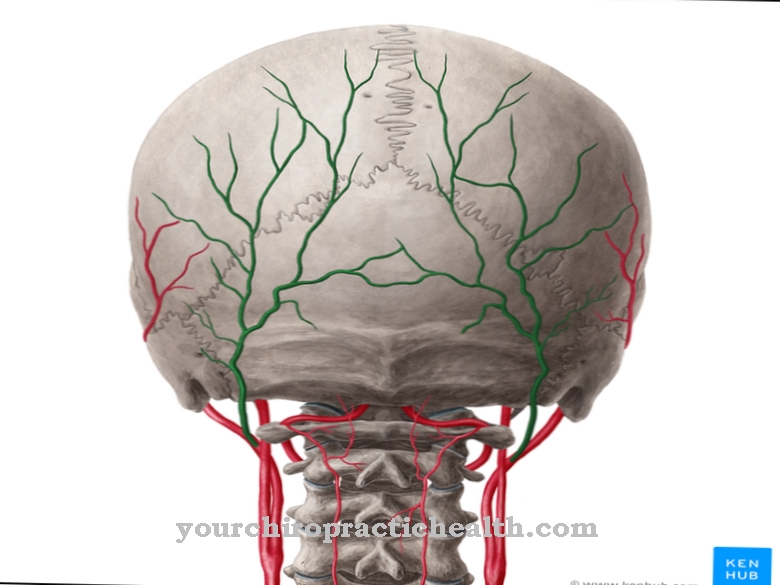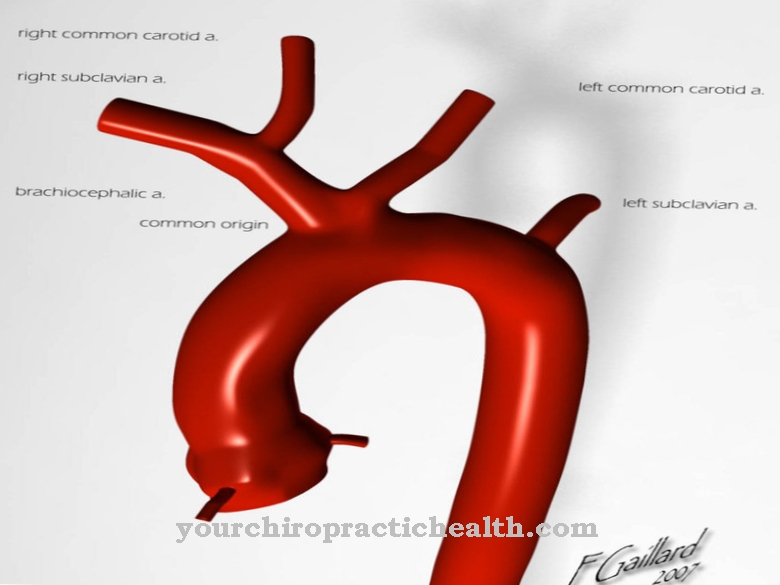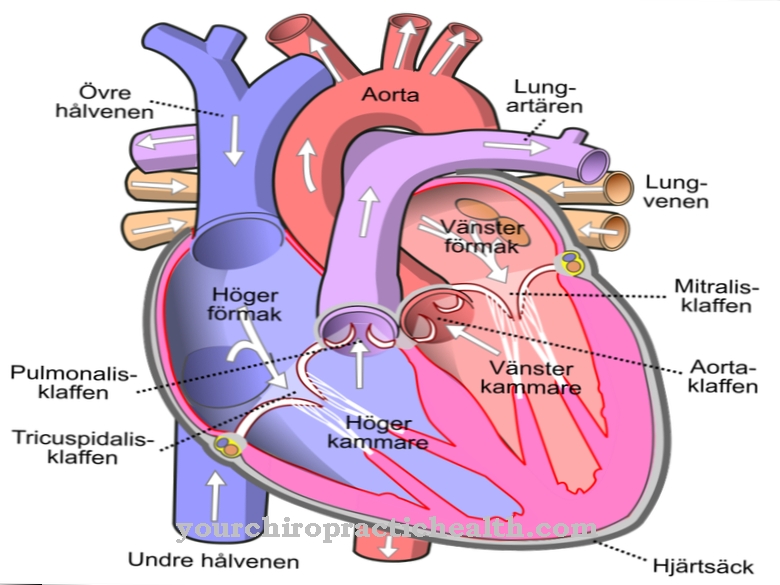Of the Sigmoid sinus is a bloodstream in the brain. It is S-shaped and transports venous blood. It ensures the blood supply to the brain.
What is the sigmoid sinus?
There are a number of vessels in the human brain that ensure the blood supply to the brain. The sigmoid sinus is a central blood vessel that is located in the back of the head.
The back of the skull is known as the occiput and forms the entire back of the head. The special thing about the vein conductor is its shape. In a cross section of the brain it can be clearly seen that it assumes an S-shape. Many different branches emanate from it, which make the blood supply in deeper tissue layers. Venous blood flows in the sigmoid sinus.
The vessel wall is thin-skinned. This makes it well-suited for the external supply of drugs and other messenger substances, but it is also more susceptible to damage. The transport of messenger substances and nutrients in the sigmoid sinus is very fast. This means that substances in the blood can be transported to its place of action via this blood conductor in a few seconds or minutes. In addition, the sigmoid sinus serves as the main route for transporting venous blood from the brain.
Anatomy & structure
The dura mater, the hard meninges that protect the brain, forms duplications. This process creates cavities in the meninges. These are used by venous blood conductors to ensure the blood supply within the brain.
The blood from the meninges, brain area and eye socket is collected in the cavities. It then flows into the internal jugular vein. This is located in the posterior fossa, the jugular foramen. This is where the superior sagittal sinus is located. This runs along the upper edge of the falx cerebri. The inferior sagittal sinus runs along the lower edge and ends in the rectus sinus.
The superior sagittal sinus and the inferior sagittal sinus then flow together. From the confluens, the path continues as the transverse sinus. This frames the posterior fossa laterally and from behind. Ventrally, it continues and merges into the s-shaped curved sinus sigmoid. The sigmoid sinus ends in the jugular foramen. This is the place where the internal jugular vein originates.
Function & tasks
Important messenger substances are transported through the blood. These are essential for the supply of organs and vessels. They include, for example, cells, hormones or protein-containing blood plasma. The blood thus plays a central role in transport. The various active substances are directed to organs via the veins and arteries and then diverted again.
The sigmoid sinus is an essential component of many vascular branches in this system. He is responsible for a wide area in the back of the skull. The supply of the brain is essentially ensured through its activity. In addition, it is used to remove the cerebral blood. This means that, for example, hormones produced in the pituitary gland or the posterior lobe of the pituitary gland can be quickly transported out of the brain by the sigmoid sinus and can reach the organs where they are supposed to develop their effect.
Heat regulation also takes place via the blood. This ensures the correct temperature in the brain via the sigmoid sinus. The sigmoid sinus is often used as an access route for surgical interventions in the head area. Due to its location and size, it can be used by surgeons to pave a way through the skull wall to the cerebellopontine angle. The sigmoid sinus supplies the superior veins inside the skull. Due to its shape it offers many possibilities for branches.
You can find your medication here
➔ Medicines against memory disorders and forgetfulnessDiseases
Inflammation is a common disease of the blood vessels throughout the human body. In this condition, a blood clot forms inside a blood conduit. The sigmoid sinus is very prone to sinus vein thrombosis.
This can be triggered by a middle ear suppuration. This is initially not noticed by the patient. If it continues to grow, the blood stagnates and the first symptoms arise. This manifests itself in pain in the affected region and feelings of tension. Although sinus vein thrombosis is rare, there is a risk of dying from a stroke from the clot. Most patients are between 30 and 40 years of age. In addition, the clot can break loose and be transported to the heart. From there it flows following the current to the lungs. If the clot, which is also known as a thrombus, clogs a blood vessel at this point, the patient will develop a pulmonary embolism. This is classified as life-threatening.
The vessel walls of veins in the human body are thin. This leaves them vulnerable to lesions. Once the sigmoid sinus is damaged, problems arise with supplying the brain. In addition, the removal of the venous cerebral blood is no longer guaranteed. Veins play a central role in diseases such as cancer. In them, cancer cells are transported to any part of the body. As soon as they detach from a tumor that has formed, they enter the bloodstream. Regardless of where they are transported to, the cancer cells can develop new metastases at this point. This creates new tumors and the disease unintentionally spreads further.

























.jpg)

.jpg)
